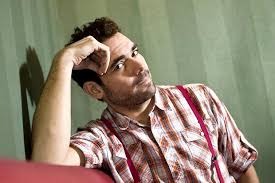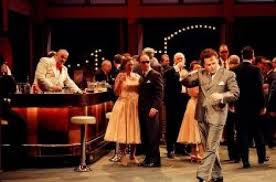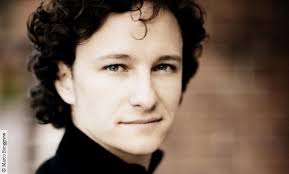At a Press Conference this morning, ENO announced its new season and the changes it will be making over the next few years. It has been a rough time for the Company over the last year but things really do seem to have turned a corner, even if there are still a significant number of problems – not least the on-going financial concerns which have led to a change of focus. This however should be all for the good as it is spreading the work of the Company outside of central London and aiming to bring in ever wider audiences while clearly focused on classical opera.
Daniel Kramer spoke with real enthusiasm of his new post which he takes up on 1 August and the skills he will bring to the Company – skills already in evidence from his easy capacity to enthuse his audience and to praise the quality of those working with him.
There will be a particular focus this year on the work of Jonathan Miller’s whose iconic production of Rigoletto will return to the Coliseum in addition to his Mikado. Let us hope that this leads to a revival of his fine La boheme given the poor reception of the most recent version.
Season highlights include:
- ENO’s Composer-in-Residence, Ryan Wigglesworth, conducts the World Premiere of his first opera The Winter’s Tale, with actor Rory Kinnear making his directorial debut
- The European Premiere of Charlie Parker’s YARDBIRD, a jazz-infused chamber opera by Daniel Schnyder that tells the story of the great bebop pioneer, starring Lawrence Brownlee in the title role. Ron Daniels directs YARDBIRD at Hackney Empire – the first opera to be performed as part of a long-term collaboration with Hackney Empire and Opera Philadelphia
- World-renowned artist and director William Kentridge directs a new production of Berg’s Lulu, conducted by Mark Wigglesworth
- Olivier Award-winning director Richard Jones returns to ENO to direct a new production of Don Giovanni, conducted by Mark Wigglesworth, with Christopher Purves in the title role
- ENO takes Jonathan Miller’s popular production of Gilbert and Sullivan’s The Mikado to the Opera House at the Winter Gardens, Blackpool
- A new partnership with the Southbank Centre. In summer 2017, ENO will present a concert hall performance of Elgar’s The Dream of Gerontius
- ENO celebrates the work of director Jonathan Miller with a special evening marking well over 1,000 performances of his work over a 38-year period
- Revivals include Jonathan Miller’s Rigoletto, Mike Leigh’s The Pirates of Penzance, Christopher Alden’s Olivier Award-winning production of Handel’s Partenope, Catherine Malfitano’s Tosca and Penny Woolcock’s The Pearl Fishers
- ENO announces a new partnership with Silent Opera, supporting young British director Daisy Evans



